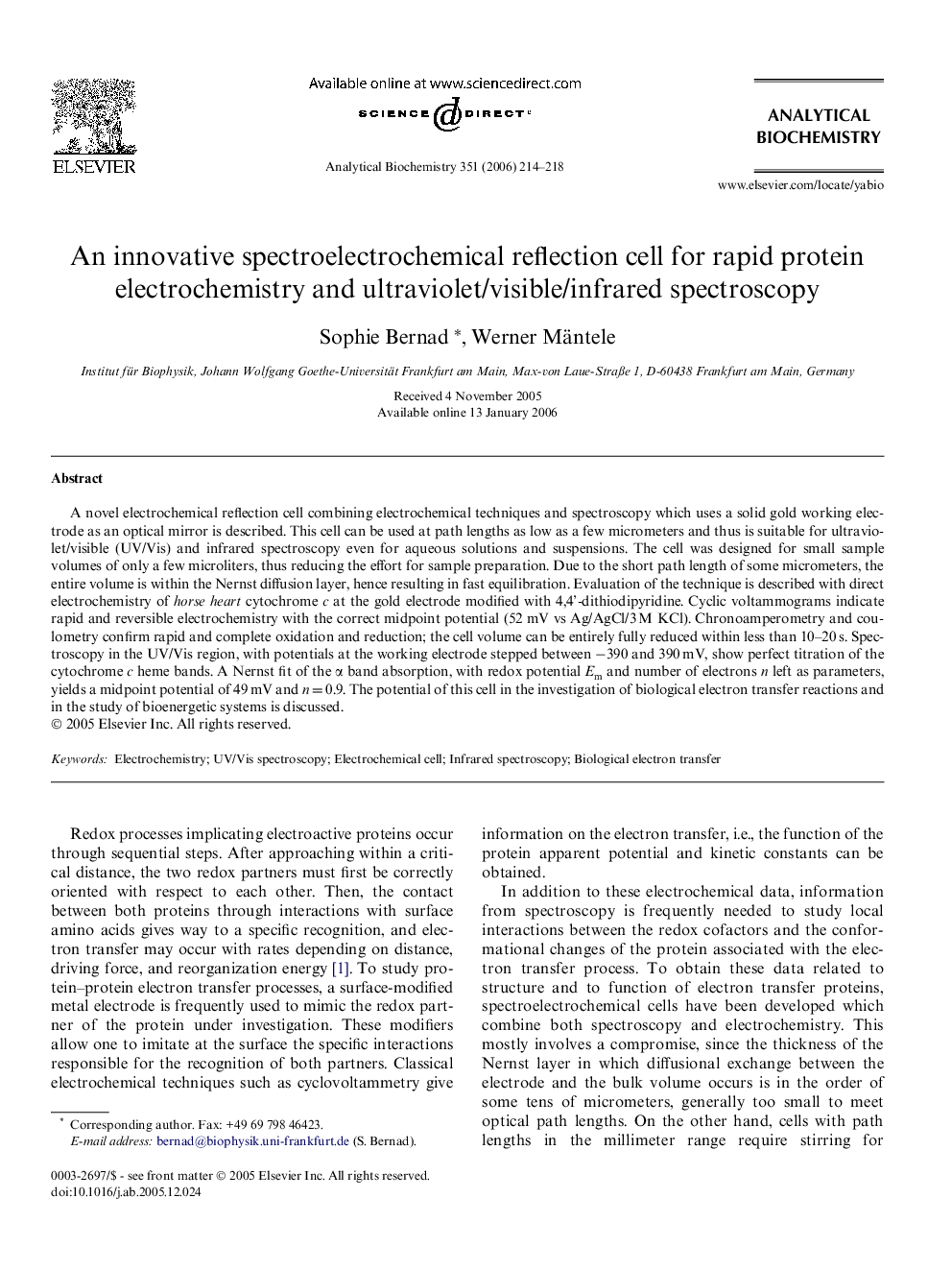| Article ID | Journal | Published Year | Pages | File Type |
|---|---|---|---|---|
| 1176814 | Analytical Biochemistry | 2006 | 5 Pages |
A novel electrochemical reflection cell combining electrochemical techniques and spectroscopy which uses a solid gold working electrode as an optical mirror is described. This cell can be used at path lengths as low as a few micrometers and thus is suitable for ultraviolet/visible (UV/Vis) and infrared spectroscopy even for aqueous solutions and suspensions. The cell was designed for small sample volumes of only a few microliters, thus reducing the effort for sample preparation. Due to the short path length of some micrometers, the entire volume is within the Nernst diffusion layer, hence resulting in fast equilibration. Evaluation of the technique is described with direct electrochemistry of horse heart cytochrome c at the gold electrode modified with 4,4’-dithiodipyridine. Cyclic voltammograms indicate rapid and reversible electrochemistry with the correct midpoint potential (52 mV vs Ag/AgCl/3 M KCl). Chronoamperometry and coulometry confirm rapid and complete oxidation and reduction; the cell volume can be entirely fully reduced within less than 10–20 s. Spectroscopy in the UV/Vis region, with potentials at the working electrode stepped between −390 and 390 mV, show perfect titration of the cytochrome c heme bands. A Nernst fit of the α band absorption, with redox potential Em and number of electrons n left as parameters, yields a midpoint potential of 49 mV and n = 0.9. The potential of this cell in the investigation of biological electron transfer reactions and in the study of bioenergetic systems is discussed.
